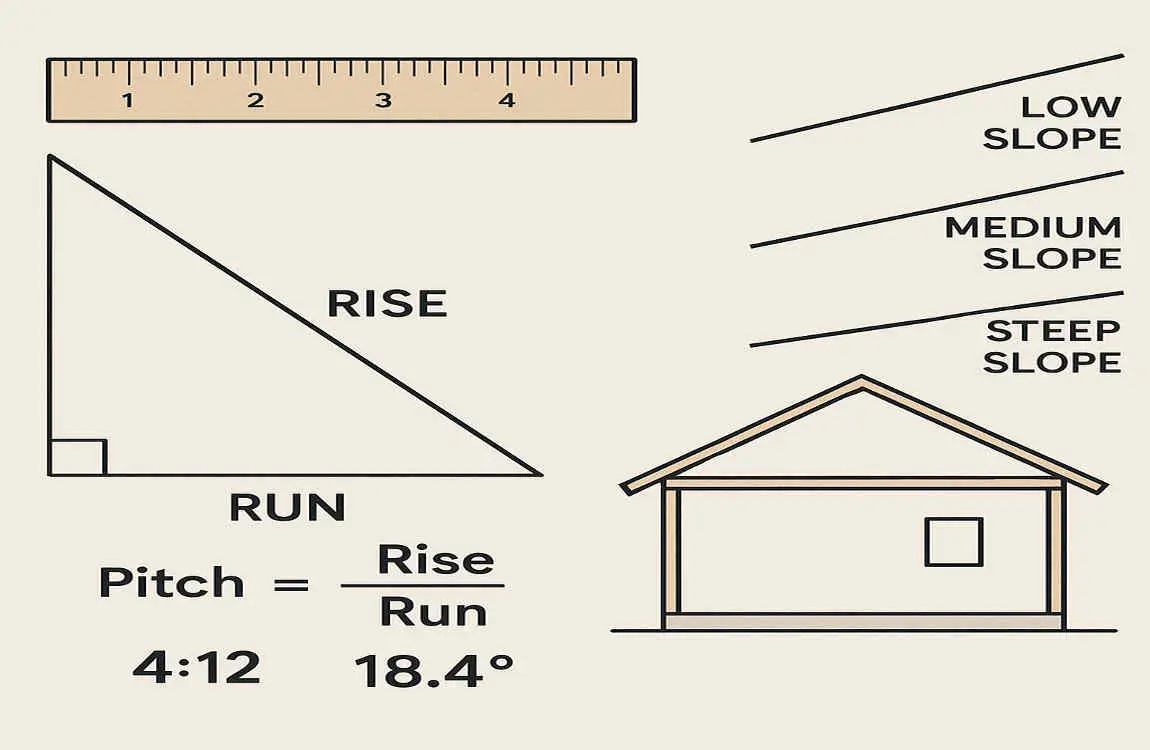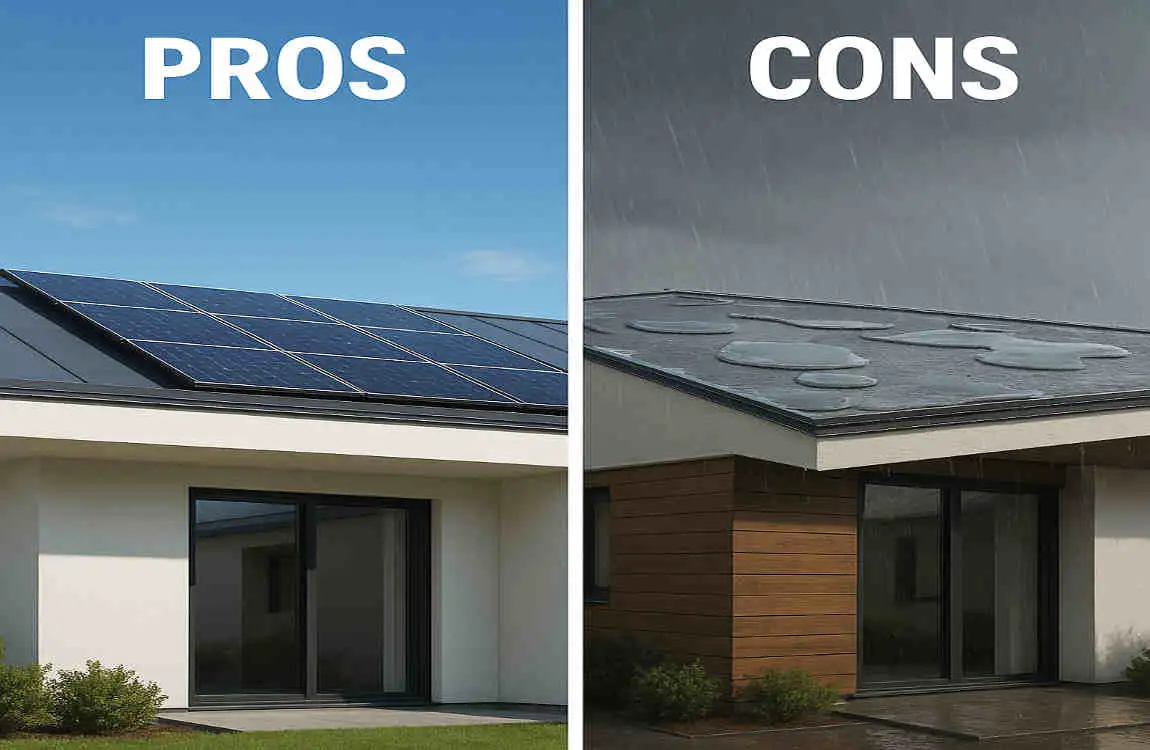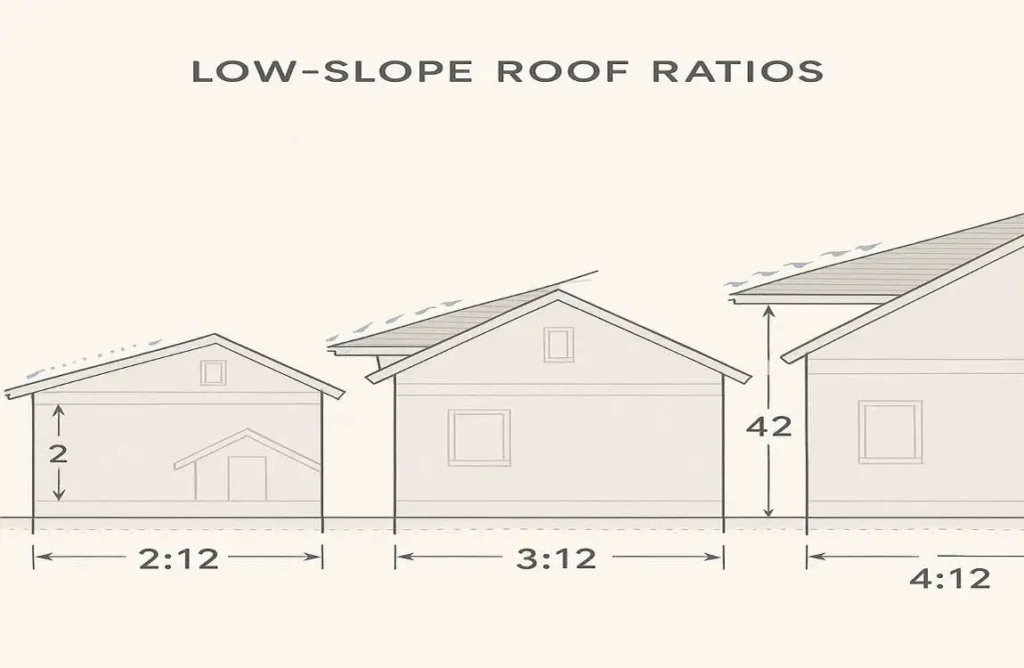Hey there, homeowner! Have you ever looked up at your roof and wondered why it’s shaped the way it is? Roofs aren’t just there to keep the rain out—they play a significant role in your home’s overall health. Let’s discuss roof slopes, which essentially describe the steepness or flatness of your roof. This slope affects everything from how well water drains off to what materials you can use.
Why does this matter to you? Knowing your roof’s slope helps you make informed decisions about building, repairing, or even selling your home. As a real estate agent with a passion for home decor, I’ve seen how the right roof can boost a property’s curb appeal and value—check out more tips on my site, homeimprovementcast.co.uk. But today, we’re zeroing in on something specific: which of the following roof slope ratios qualifies as low-slope? It’s a question that often arises, especially when dealing with repairs or renovations.
What Is Roof Slope?

Imagine your roof as a hill your house sits on. The roof slope, often called pitch, tells you how steep that hill is. We measure it by looking at the “rise”. Think of it like a simple math problem: if a roof rises 4 inches for every 12 inches it runs horizontally, that’s a 4:12 slope.
Now, let’s break down the types. Low-slope roofs are the flattish ones, almost like a pancake on your house. Steep-slope roofs are more like a mountain peak—think classic A-frame houses. And flat roofs? They’re a subset of low-slope, with barely any tilt at all.
To make this visual, picture a diagram: a low-slope roof might look like a slight incline, while a steep one shoots up sharply. If you’re into home decor like me, these slopes can influence your exterior style—low-slopes often give a modern, sleek vibe that pairs well with minimalist designs.
Why Roof Slope Matters: Benefits and Considerations
Your roof’s slope isn’t just about looks—it’s a key player in keeping your home safe and efficient. First off, it impacts water drainage. A steeper slope allows rain and snow to slide right off, reducing the likelihood of puddles or ice buildup. On the other hand, a low slope requires careful design to prevent the accumulation of standing water.
This ties directly into weather resistance. In rainy areas, a good slope prevents leaks and mold. I’ve advised clients in real estate that ignoring this can lead to costly fixes down the line.
Slope also guides your roofing material choices. Steep roofs often require shingles or tiles, but low-sloped roofs demand waterproof membranes to handle slow drainage. Installation methods change too—low-slopes might use heat-welded seams for a tight seal.
Don’t forget energy efficiency. A low-slope roof can accommodate more insulation, keeping your home cooler in the summer and warmer in the winter. This means lower bills and a cozier living space.
Finally, maintenance varies by slope. Steep ones might require less frequent checks since gravity helps, but low slopes require regular upkeep to clear debris. As you think about your own home, ask yourself: Does my roof’s slope match my climate and lifestyle?
Understanding Low-Slope Roofs
So, what exactly makes a roof a “low-slope” roof? In building standards, it’s defined as anything with a slope less than 3:12. That means for every 12 inches horizontally, it rises less than 3 inches. It’s not totally flat, but close enough that water doesn’t rush off quickly.
These roofs appear in various locations. Commercial buildings, such as warehouses, often utilize them for their wide, open spaces. In homes, you’ll usually see low-sloped roofs on modern designs, flat-roof extensions, or in dry climates where heavy rain isn’t a significant issue.
If you’re a homeowner eyeing a remodel, consider how a low-slope roof could enhance your property’s value. On my site homeimprovementcast.co.uk, I share decor ideas that complement these sleek roofs.
Which of the Following Roof Slope Ratios Qualifies as Low-Slope?
Alright, let’s tackle the big question head-on: which of the following roof slope ratios qualifies as low-slope? According to industry standards from groups like the International Building Code, a low-slope roof is typically defined as anything with a slope of 3:12 or less. Some experts suggest that slopes of 2:12 or even 1:12 are still considered low-slope, but the key is that they are gentle enough to require exceptional waterproofing.
For example, a 2:12 ratio means the house roof rises 2 inches over 12 inches—definitely a low-slope roof. Compare that to a 4:12, which is moderate, or a 6:12, which is steep. Anything with a ratio of 3:12 or below qualifies as low, while higher ratios don’t.
To help you visualize, here’s a quick table comparing common ratios:
Roof Slope Ratio Classification Common Use Drainage Speed
1:12 Low-Slope Flat roofs in dry areas Very slow
2:12 Low-Slope Modern homes, commercial , Slow
3:12 Moderate Transitional designs Moderate
4:12 Moderate Standard residential Good
6:12 Steep Traditional houses Fast
12:12 Very Steep A-frame cabins Very fast
See how the lower ratios stand out? Now, how do you measure this yourself? Grab a level and a tape measure. Place the level on your roof, measure 12 inches along it, then see how many inches it rises at the end. That’s your ratio. If it’s under 3:12, congrats—you’ve got a low-slope roof!
Remember, accuracy matters. Miscalculating could lead to wrong material choices. If you’re unsure, we’ll cover pro tips later.
How to Identify If Your Roof Is Low-Slope
Curious about your own roof? You don’t need fancy gear to check. Start with safety—never climb up without proper precautions. Instead, use a ladder to peek from the edge.
Here’s a simple numbered list of steps to measure:
- Gather tools: A 12-inch level, tape measure, and notepad.
- Position the level horizontally on the roof surface.
- Measure the rise: From the level’s end, drop a plumb line and note the vertical distance.
- Calculate: Divide the rise by 12 inches of run to get your ratio.
If DIY feels intimidating, consider hiring a professional. As a real estate agent, I always recommend inspections before buying or selling—it can reveal hidden issues that affect the home’s value.
Pros and Cons of Low-Slope Roofs for Homeowners

Low-slope roofs have their upsides. One significant advantage is the more straightforward installation. Without steep angles, workers can lay materials faster, saving you time and money. They’re often cost-effective upfront, especially for large areas.
Design-wise, they offer flexibility. Want a rooftop deck or green space? Low-slopes make it easy, tying into modern home decor trends I love discussing on homeimprovementcast.co.uk.
But there are downsides. Drainage challenges top the list—water can pool, leading to leaks if not addressed. They’re more susceptible to damage from debris or foot traffic.
Slope affects lifespan, too. A well-maintained low-slope roof can last 20-30 years, but neglect can significantly shorten its lifespan. Repair costs can add up, so weigh this against your budget.
What do you think—does a low-slope fit your home’s style?
Maintenance Tips for Low-Slope Roofs
Keeping a low-slope roof in top shape isn’t hard, but it takes consistency. Regular checks prevent minor issues from becoming big headaches.
Start with an inspection checklist:
- Inspect the membrane for cracks or bubbles.
- Check drains for clogs.
- Inspect seams for wear.
- Clear leaves, branches, and dirt.
Seasonally, prep for weather. In fall, remove leaves; in winter, watch for ice dams. Summer? Check for UV damage.
Schedule pro maintenance yearly. If you spot leaks, act fast—delaying could damage your home’s interior decor and structure.
Common Misconceptions About Low-Slope Roof Ratios
Another myth: “Low-slope roofs always leak.” They don’t—if installed right and maintained, they’re reliable. The key is understanding your ratio to choose proper materials.
People often confuse low-slope with totally flat, but in roofing sytem terms, flat means almost no slope at all. Accurate knowledge saves money—imagine avoiding unnecessary repairs!
